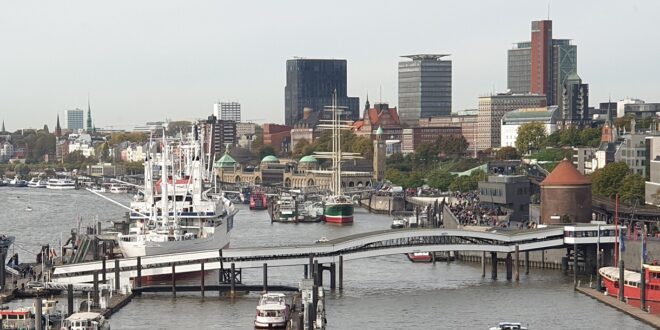The urban landscape in Germany is changing as the number of people with foreign origin increases. A new report published by the Statistics Office North shows that the proportion of Hamburg residents with an immigrant background rose to 39.3 percent as of 31 December 2022. Compared to the previous year, the share of migrants increased by almost two percentage points.
With a population of 1.852 million, Hamburg is the second largest city in Germany.
762,384 people with a migration background lived in Hamburg at the end of last year. In relation to the total population, this is about 40 per cent of all residents. This puts the city well above the national average of 22.5 per cent.
The most common countries of origin of the migrant residents of Hamburg were Turkey, Poland and Afghanistan, according to the report.
READ ALSO West Africans in Hamburg: Roots in Two Worlds
According to the statistics, most people with a migration background live in the district of Billbrook. There, they constitute 87.5 percent of the population, followed by Veddel with 76.1 percent and Billwerder with 67.7 percent.
The fewest people with a migration background live in the districts of Spadenland with 10.6 percent, Neuengamme with 12.4 percent and Altengamme with 12.6 percent.
Hamburg, a port city and centre of commerce, attracts many foreigners because of employment opportunities. People from many nations have historically thus contributed to its diversity and richness.
Hamburg is one of the four German metropolises, where more than one million people live. The others are Berlin, Munich and Cologne.
Click HERE for the report in German language
 THE AFRICAN COURIER. Reporting Africa and its Diaspora! The African Courier is an international magazine published in Germany to report on Africa and the Diaspora African experience. The first issue of the bimonthly magazine appeared on the newsstands on 15 February 1998. The African Courier is a communication forum for European-African political, economic and cultural exchanges, and a voice for Africa in Europe.
THE AFRICAN COURIER. Reporting Africa and its Diaspora! The African Courier is an international magazine published in Germany to report on Africa and the Diaspora African experience. The first issue of the bimonthly magazine appeared on the newsstands on 15 February 1998. The African Courier is a communication forum for European-African political, economic and cultural exchanges, and a voice for Africa in Europe.


































